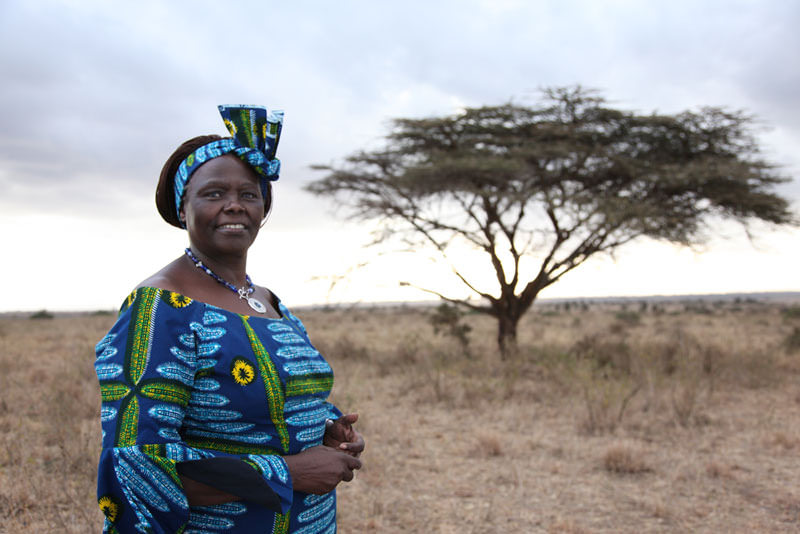Image Credit: Bernanken Francesco via Flickr
In the United States, the conservation movement emerged during the Progressive Era from 1850-1920, in response to a boom in industrialization and urbanization and a subsequent increase in resource exploitation and species extinctions. The goal was to conserve and protect the specific areas of natural habitat and preserve them from unsustainable exploitation. Through the conservation movement, national parks and monuments were created to preserve America’s landscape. Many conservation icons exist in the minds of people today, but they are often male. Take John Muir, Teddy Roosevelt, Aldo Leopold, or Sir David Attenborough for example. While extremely influential and vital to the conservation movement, these men were not the only forces moving the tide of conservation. On International Women’s Day, and all days, it is important to recognize the women that shaped the environmental conservation movement throughout history. We have highlighted two such women.
Rachel Carson was a well-known conservationist who is largely credited for spearheading parts of the American environmental movement with the publishing of her book Silent Spring in 1962. In 1936, long before Silent Spring was published, Rachel Carson joined the US Fish and Wildlife Service and was the second woman to be hired by the bureau at a professional level. In 1963, after publishing her book, Rachel Carson went on to testify before Congress and call for new policies to protect human health and the health of the environment. In Silent Spring, Carson challenged long-accepted standards of agricultural practices and called out the overuse of pesticides, specifically DDT. She warned the public of the dangers and long-term effects of the use of pesticides in agriculture. After the publication of the book, the Environmental Protection Agency created The Toxic Substances Control Act of 1976. This act found all six compounds responsible for harming the environment and wildlife. As a result, the use of these compounds was banned. Thanks to this landmark legislation, the use of DDT and other pesticides became much more regulated. Thus, the state of conservation today can, in part, thank Rachel Carson and her writing of Silent Spring for its rebound. In addition to Rachel Carson’s work in the United States, there were many female conservationists doing groundbreaking conservation work abroad. While focusing on different issues in conservation, Rachel Carson and Wangari Maathai both had hopes of creating a brighter future for generations to come.
More recently, Wangari Maathai played a vital role in conservation in Africa. From a young age, Wangari Maathai had a passion for helping her community and the environment. After a successful career of advocating for conservation, poverty reduction, and women’s rights Maathai was awarded the Nobel Peace Prize in 2004. She was the first woman in Eastern and Central Africa to obtain her Ph.D., and the first woman to chair The University of Nairobi’s Department of Veterinary Anatomy. In response to rampant deforestation, during her time as the chairman of the National Council of Women in Kenya, Maathai introduced the idea of community-based tree planting. She created this initiative after hearing complaints from women in her community regarding the lack of water and dwindling firewood resources. The movement combined advocacy, community empowerment, and conservation efforts to reduce poverty and increase environmental stewardship among women. This idea gave way to the creation of what Wangari Maathai is most widely known for, the Green Belt Movement. The Green Belt Movement led to the planting of millions of trees across Africa and inspired many countries to adopt similar methods of reforestation. Today, the Green Belt Movement is an active organization that “empowers communities, particularly women, to conserve the environment and improve livelihoods”. Wangari Maathai has been recognized for her commitment to democracy and sustainability, even addressing the United Nations many times, and serving as Assistant Minister for Environment in Kenya’s parliament. Her legacy lives on today in the millions of trees planted and millions of women that continue to be inspired to fight for their rights to natural resources and the protection of the earth.
There are many female conservationists in addition to Wangari Maathai and Rachel Carson that were vital to the movement, and there are currently many young women who are following in their footsteps! OneNature believes it is crucial that we continue to highlight and support women working in conservation and leading conservation in their communities. Women in conservation help create a more sustainable and brighter future for all.
Sources:
http://memory.loc.gov/cgi-bin/query/r?ammem/consrv:@field(DOCID+@lit(amrvgvg11div12))
https://www.nps.gov/media/video/view.htm?id=69674A1F-438C-4846-9ED1-F0723C2A747F
https://www.greenbeltmovement.org/who-we-are/our-history
https://www.loc.gov/classroom-materials/united-states-history-primary-source-timeline/progressive-era-to-new-era-1900-1929/conservation-in-progressive-era/
